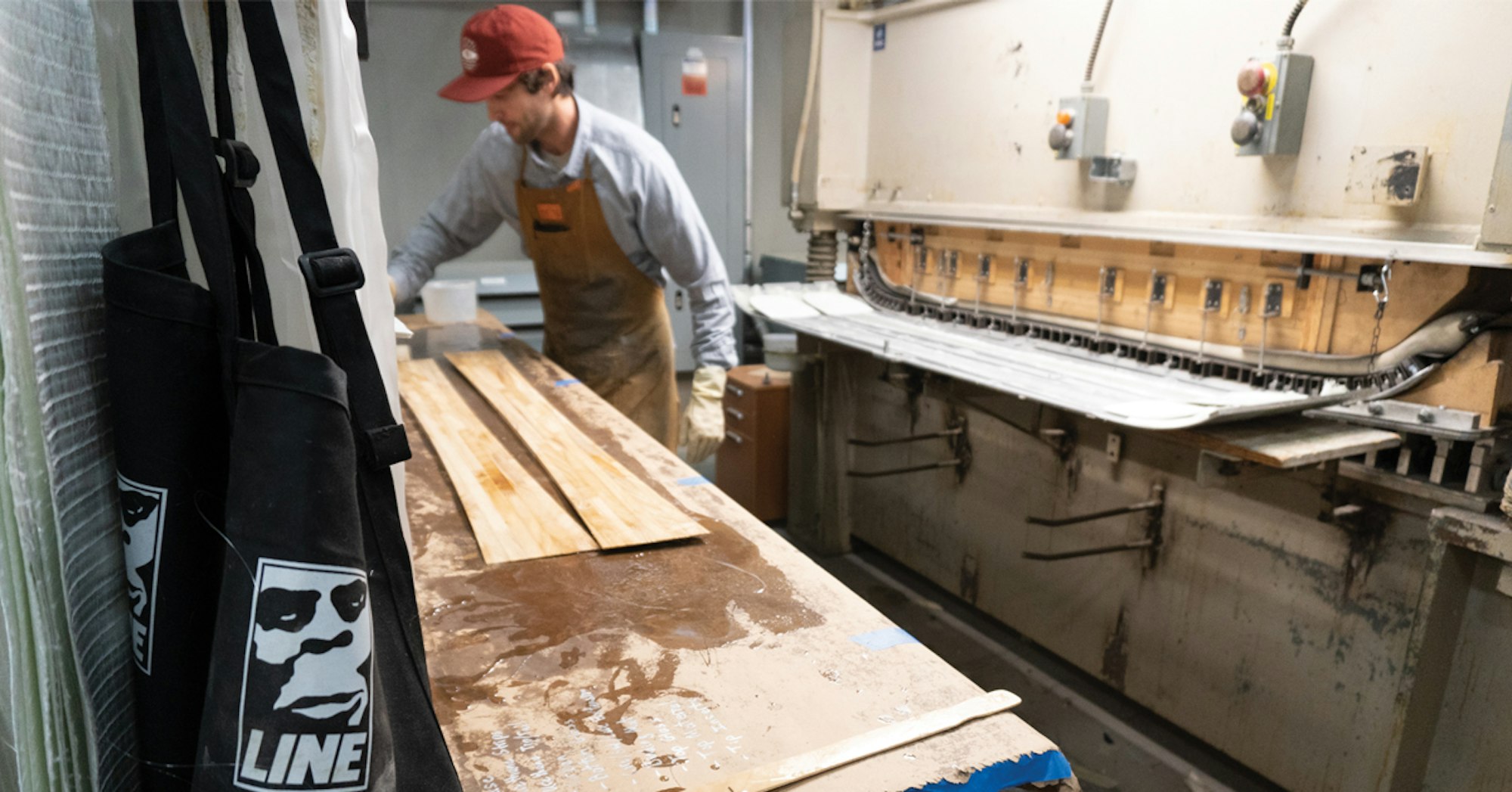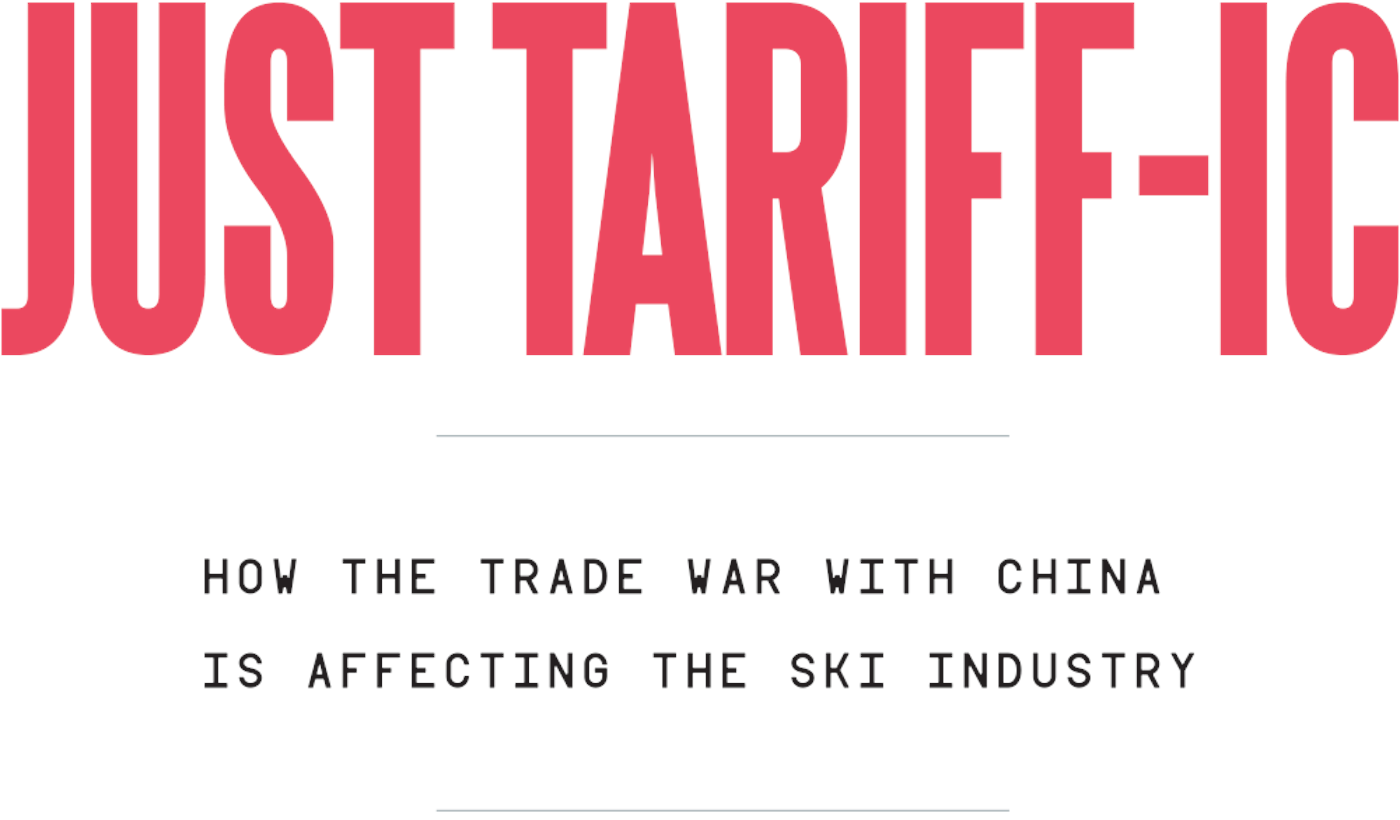
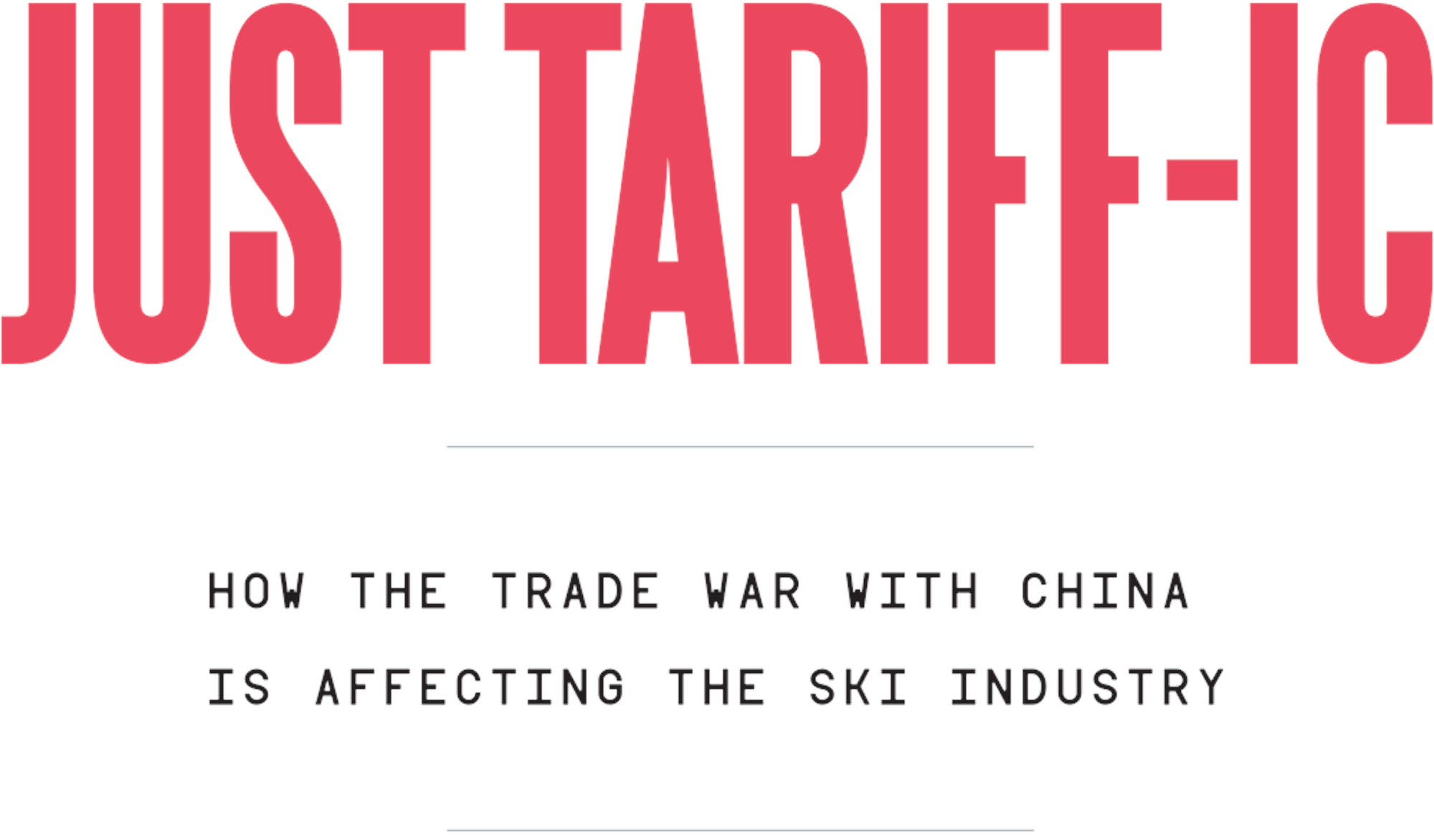
WORDS • FREDERICK REIMERS | FEATURED IMAGE • COURTESY OF LINE
On May 14, the US Trade Association announced plans to impose tariffs on an additional $300 billion worth of Chinese-made goods. With skis, bindings, outerwear and gloves making the proposed list, we couldn’t help but think back to this story, which originally appeared in our 2020 Trend Book, and what the trade conflict between the US and China means for the ski industry and its consumers.
On August 20, 2018, Jennifer Harned sat at a table in Washington, D.C., in front of a panel of eight assorted trade and labor officials and told them why Donald Trump’s proposed tariffs on China-made ski gear were a bad idea. The president of helmet-maker Bell Sport, Inc. (parent company of brands like Giro), had been concerned that her allotted five-minute testimony wouldn’t stand out amongst 349 other witnesses over the six-day hearing, so she memorized her speech in order to maintain eye contact with the trade and labor officials. She also brought four crushed and dented helmets with her—each impacted by a real accident—and had them passed amongst the panel while she spoke. Amongst millions of spoken words, Harned says, she knew “the helmets would tell a memorable story.”
Her main point: if a 25 percent tariff was levied on helmets, and her company was forced to pass those costs to consumers, those consumers might just forgo replacing a helmet that had been damaged in an impact—like the ones in their hands—and people would certainly end up, as she testified, “dying of an impact to their skull.”


SKIER: Daniel Loosli | LOCATION: Champery, SUI | PHOTO: Ahriel Povich
On September 17, 2018, the US International Trade Commission decided that helmets would be exempted from a 195-page list of thousands of items slated for a 10 percent tariff increase—provisionally slated to rise to 25 percent on January 1, 2019—presumably on the basis of Harned’s presentation. Despite testimony from trade group representatives from the Snowsports Industries of America (SIA) and Outdoor Industry Association (OIA), they were the only items among five categories of ski products—helmets, knit hats, leather gloves, ski bags/backpacks and belts—to receive a reprieve from the tariffs.
Certain ski gear is amongst some $250 billion worth of goods produced in China being tariffed by the US Trade Association in a dispute over alleged Chinese intellectual property theft. Tariffs on the most recent list, approved in August, were set at 10 percent, to rise to 25 percent if the dispute is not settled. Furthermore, the Trump administration has threatened to lay tariffs on an additional $267 billion in goods, which would almost certainly hit additional ski industry products including skis and apparel. The tariffs will definitely damage ski manufacturers and retailers alike, though trade talks were rekindled in early January 2019, raising optimism that an agreement might be reached to avoid further escalation.
“Companies would be forced to pass the costs on to consumers,” says SIA President Nick Sargent, “and few will be able to move operations out of China.” In his August testimony before the committee he also pointed out that the inevitable price increases would impact dozens of other businesses, not just ski shops but resorts and restaurants, especially in small towns where tourist’s budgets drive the economy.
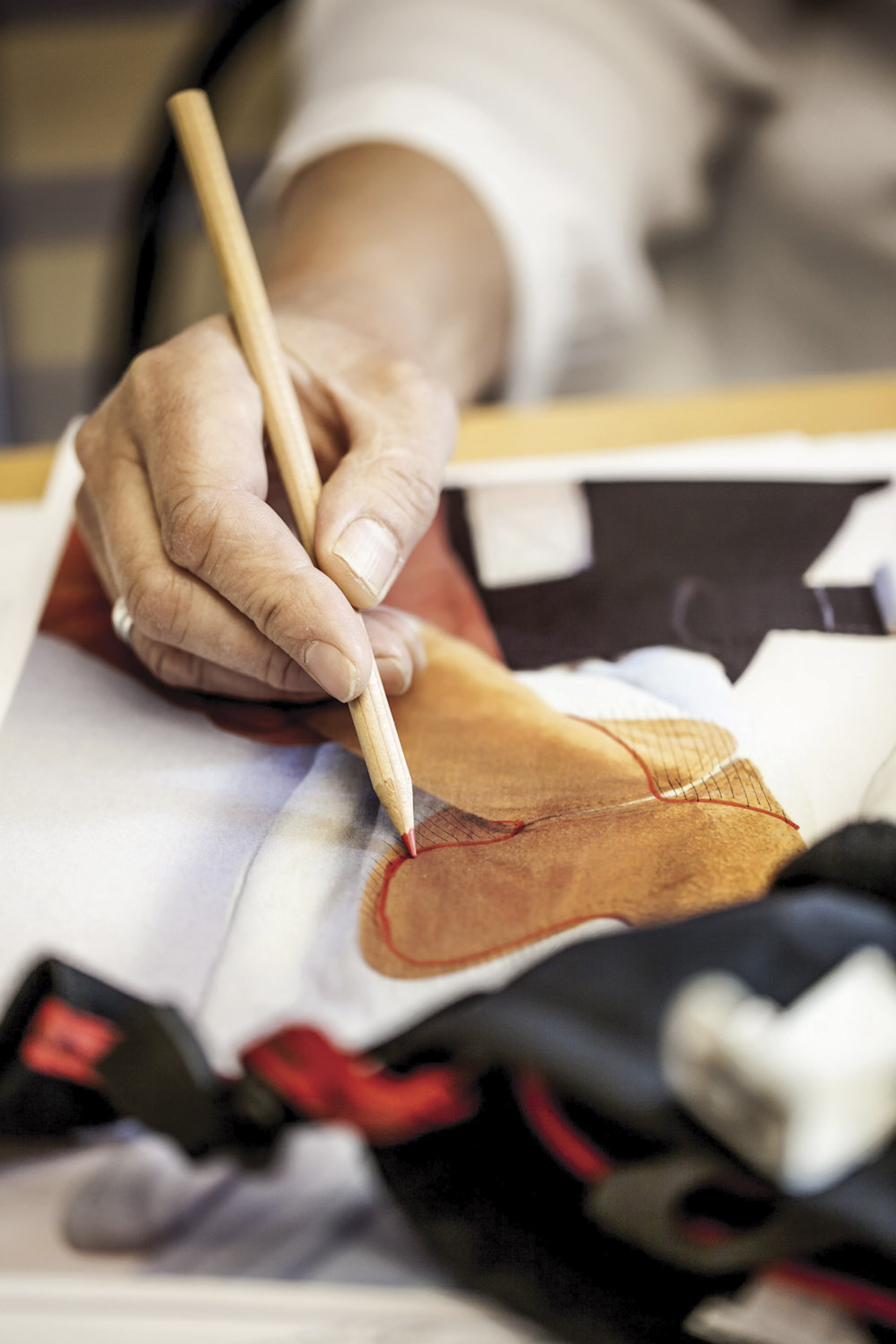
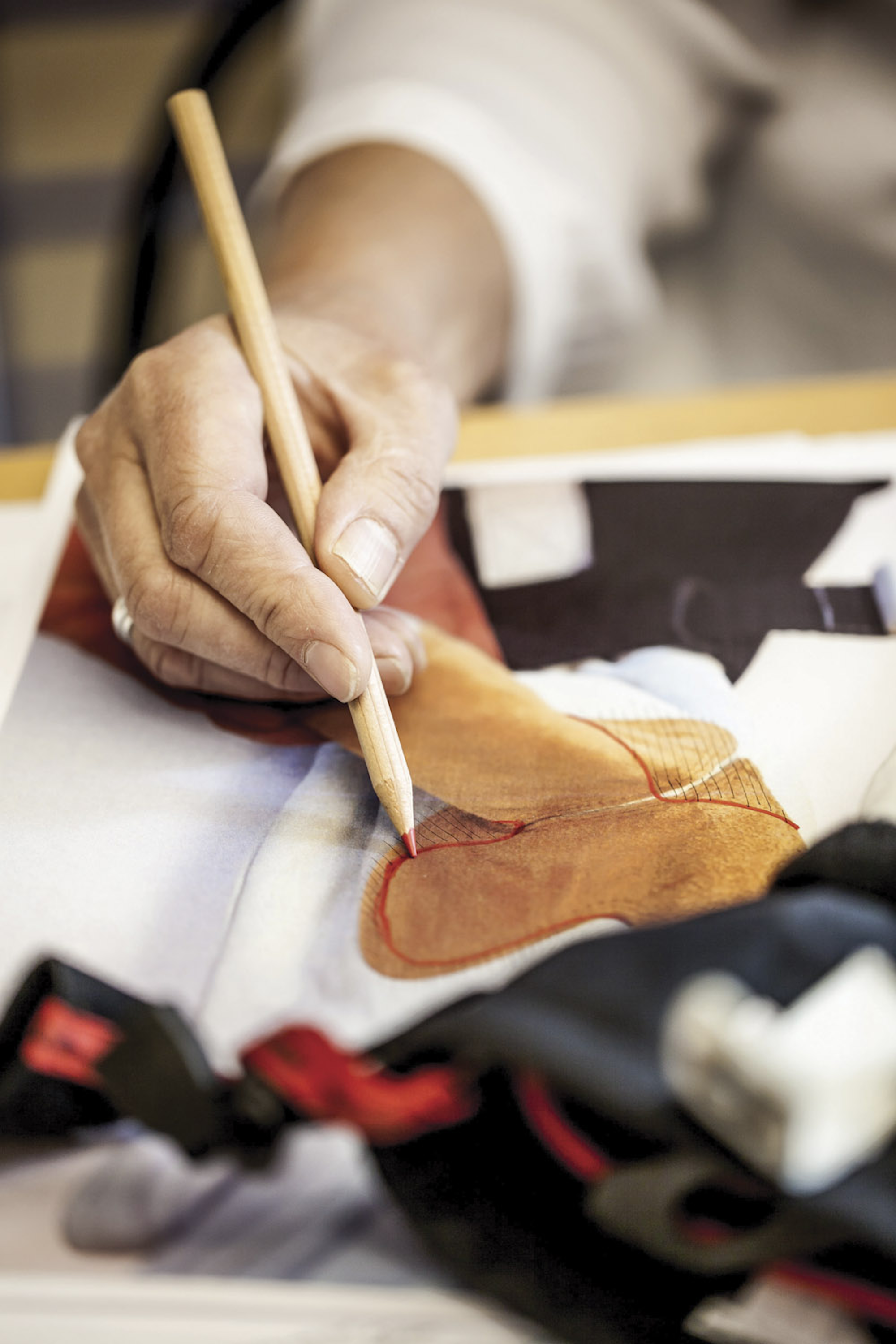
Scenes from Hestra’s glove design process. Leather gloves are included in the list of tariffs imposed upon China-made ski gear by the Trump administration. PHOTO: courtesy of HESTRA
“If we raise the price of a $175 ski glove to $200,” says Hestra USA President Dino Dardano, “We may well sell a lot fewer gloves.” Hestra ate the cost of the 10 percent increase on goods already ordered when the tariffs went into effect, says Dardano, “because we consider an order a contract, and it would be bad business to break a contract.” It would not absorb the rest of the tariff if it does rise to 25 percent, though, he said.
Hestra is working to sidestep most of those tariffs next year by moving the production of its US-sold gloves to its factories in Hungary and Vietnam. The company has five factories worldwide, and gloves sold to European consumers will remain in the two China factories, which are obviously unaffected by the American tariffs. The net effect so far company wide, says Dardano, is a three to five percent increase to the consumer.
For Line and Full Tilt, the strategy is more of a wait-and-see, says Global Brand Director Josh Malczyk. Full Tilt’s ski boots are made in Italy, so are unaffected, whereas the company’s Chinese-made Line ski bags will see a price increase. As for the potential for tariffs on its Chinese-made skis, Malczyk says, comically, “Donald Trump and his family skis in Aspen—in jeans, probably—so we might be spared.” If tariffs on skis do come to pass this year, Line has a production, testing and prototype facility in Seattle, says Malczyk, which could be ramped up to help sidestep some of those costs.
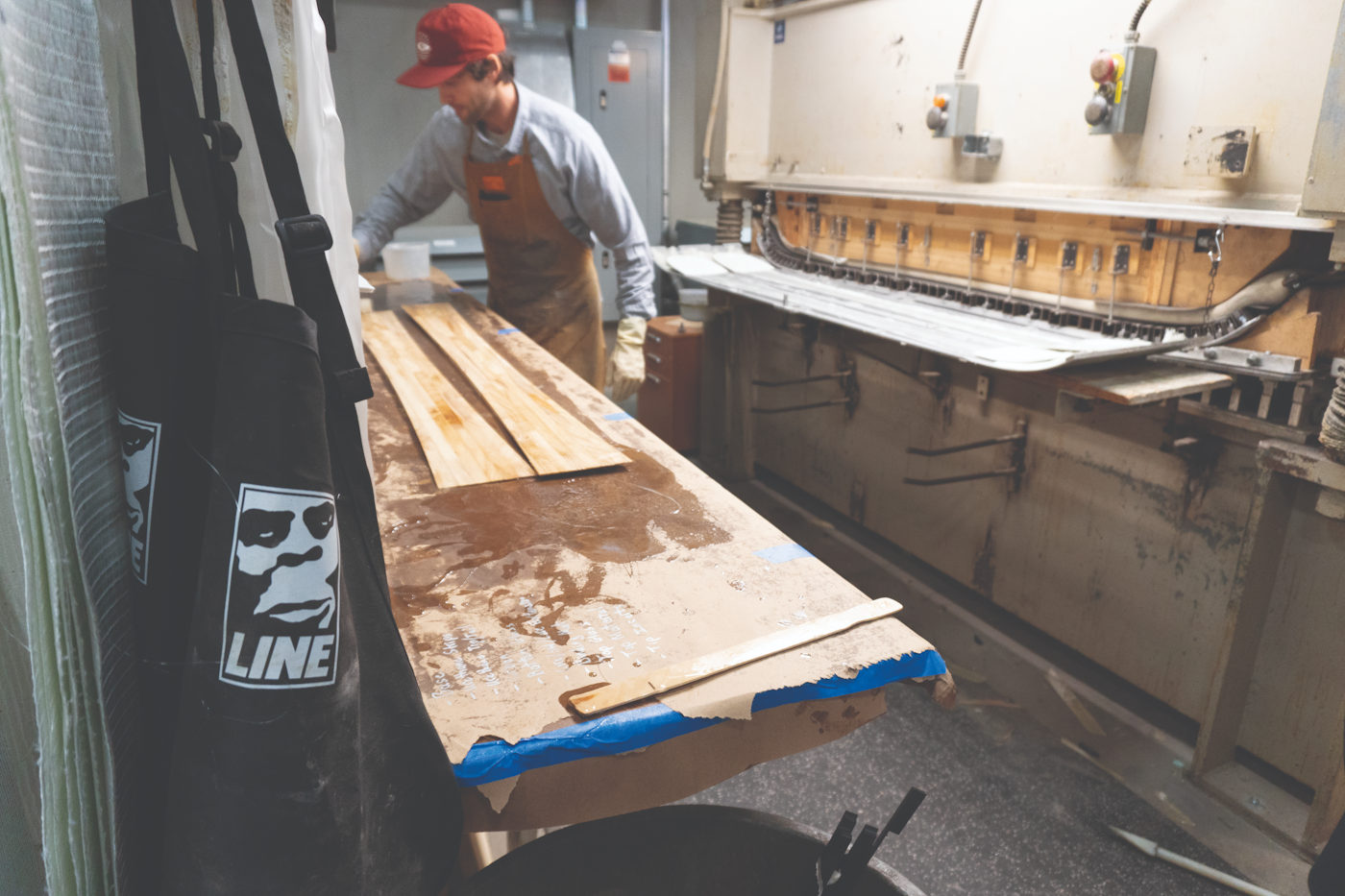
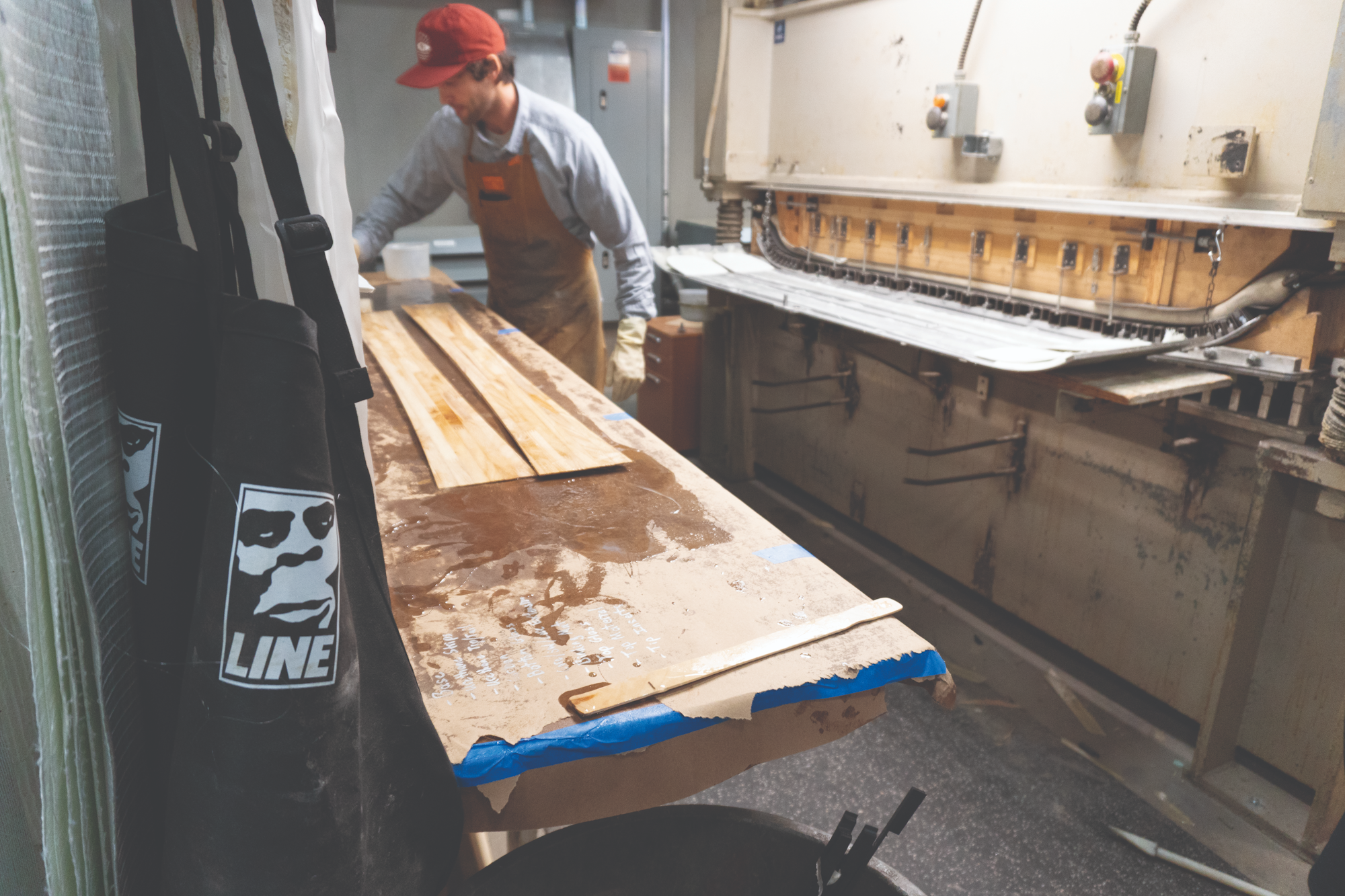
Eric Pollard working in LINE’s Seattle-based prototyping facility. PHOTO: courtesy of LINE
Malczyk, like Bell’s Harned and Hestra’s Dardano, has contacted Congress members about the issue. Dardano is also on the board of SIA, which has retained both a DC law firm and a lobbying firm. “You have to make your voice heard on this,” he says.
Rich Harper, manager of international trade for the OIA, is also urging ski industry manufacturers to invite Congress members to their headquarters for a visit. “Show them your employees who design, develop, test and market your products in the United States,” he says. “They need to see that this trade war is impacting American companies, too.” Between such pressure on the Trump administration from American business and recent reports of slowing Chinese growth, many are optimistic that the newest round of trade talks will yield progress toward an end of the trade war, hopefully before ski lifts stop spinning this spring.

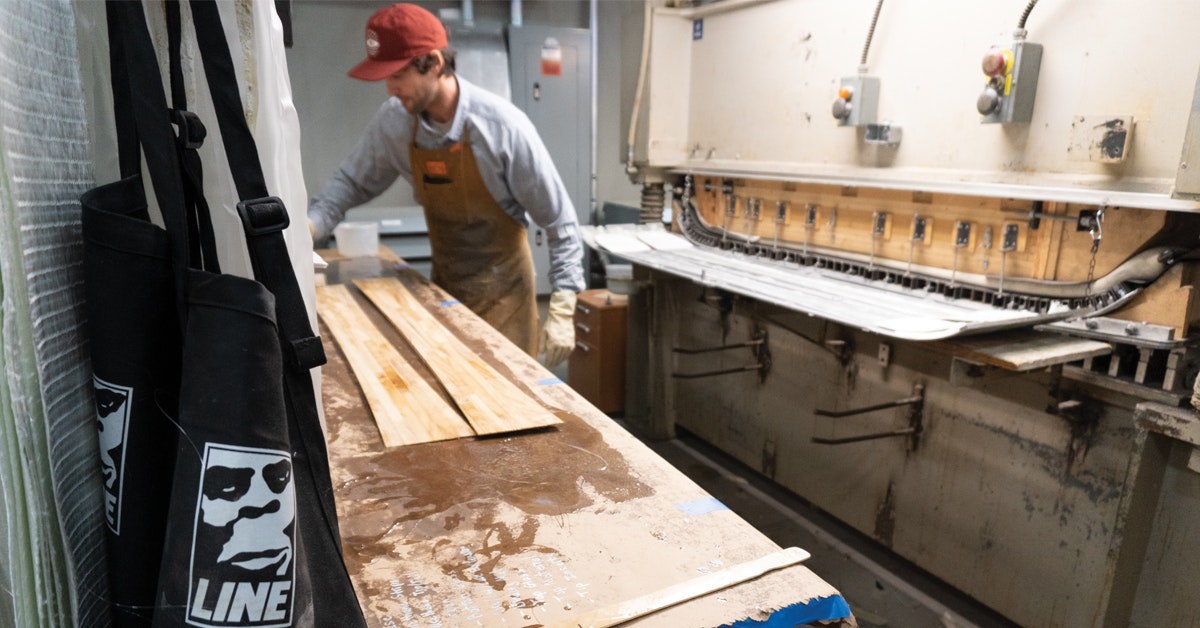

![[GIVEAWAY] Win a Head-to-Toe Ski Setup from IFSA](https://www.datocms-assets.com/163516/1765920344-ifsa.jpg?w=200&h=200&fit=crop)


![[GIVEAWAY] Win a Legendary Ski Trip with Icelantic's Road to the Rocks](https://www.datocms-assets.com/163516/1765233064-r2r26_freeskier_leaderboard1.jpg?auto=format&w=400&h=300&fit=crop&crop=faces,entropy)




![[GIVEAWAY] Win a Head-to-Toe Ski Setup from IFSA](https://www.datocms-assets.com/163516/1765920344-ifsa.jpg?auto=format&w=400&h=300&fit=crop&crop=faces,entropy)


